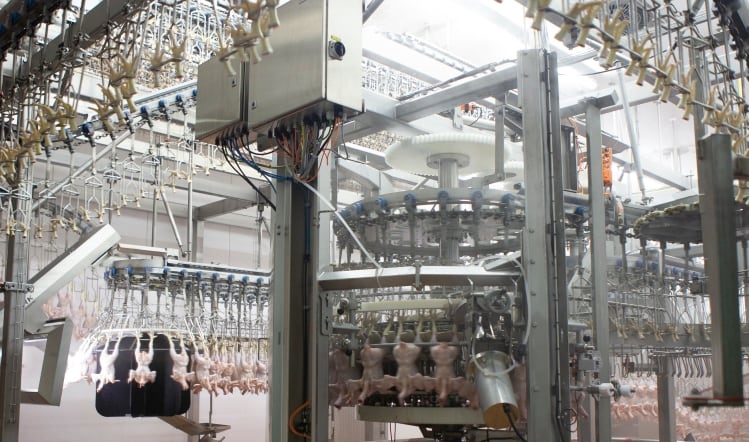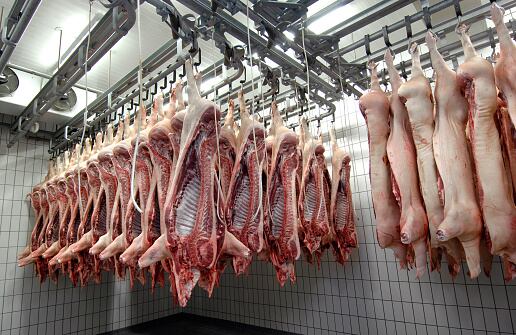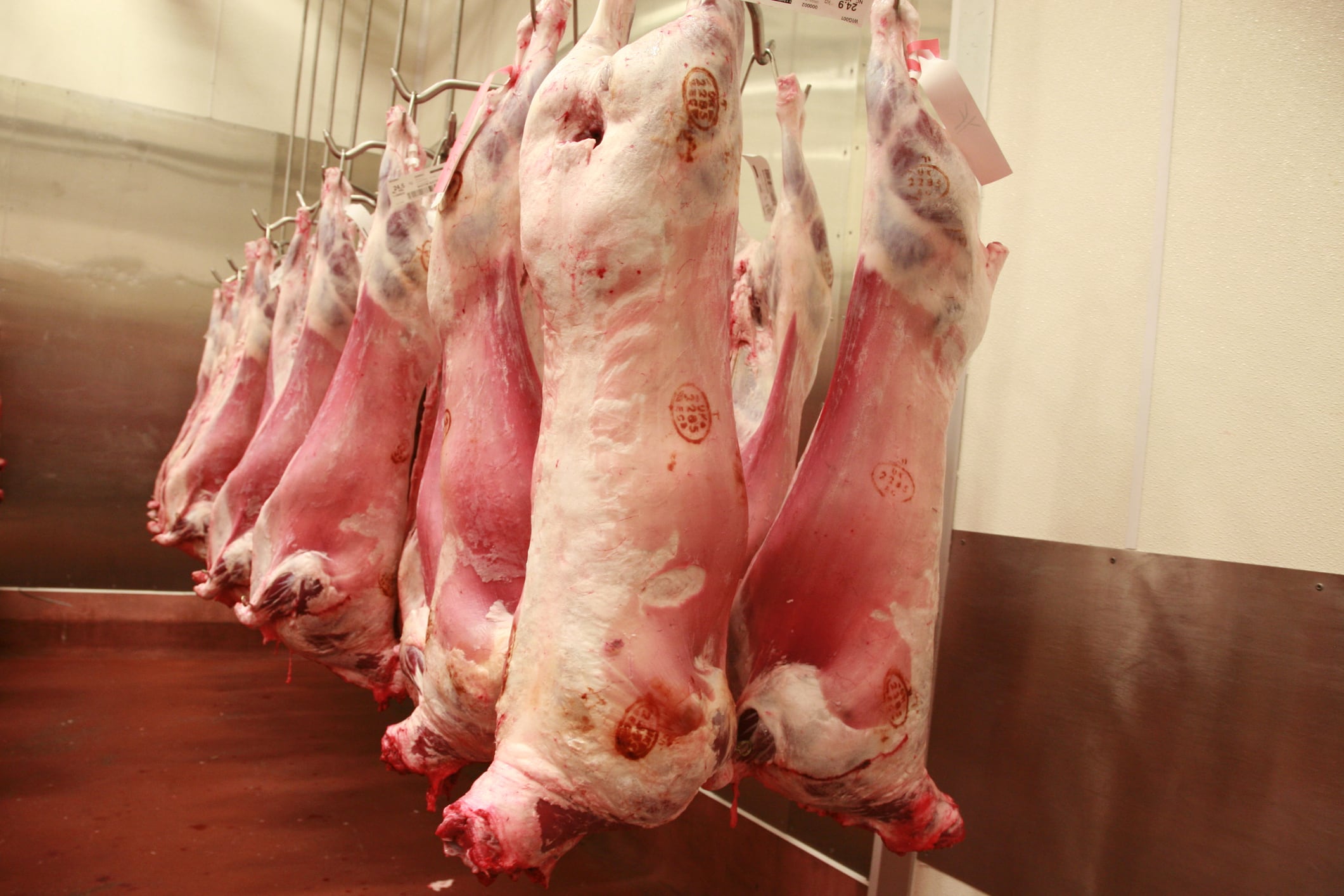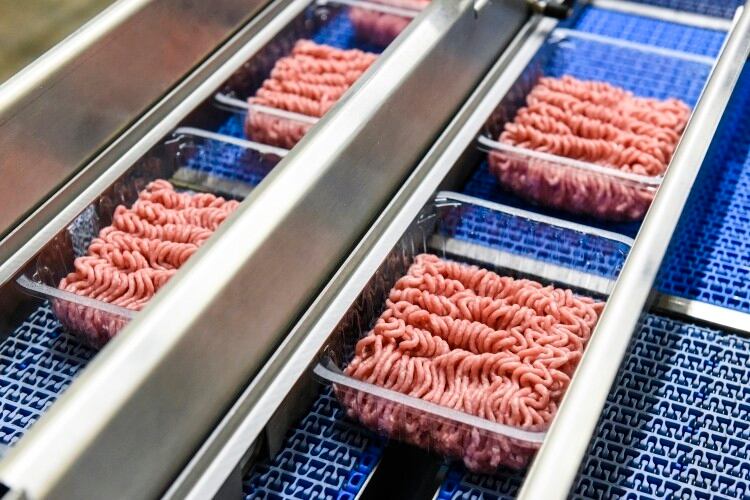Meat sector businesses are not trading in an easy environment. Brexit means uncertainty over EU labour and access to international markets, while the planned merger between Sainsbury’s and Asda is causing concern about the potential squeeze on margins.
Hygiene exposes earlier this year at 2 Sisters Food Group and Russell Hume, meanwhile, haven’t helped the public’s impression of practices in the meat industry either.
Faced with such challenges, it would be easy to think that investment would be way down on the priority list. But for many processors, the answer has been to plough millions into new equipment – and cutting, slicing and dicing machinery has led the way.
A new mincing line at Tulip’s Tipton site is a recent example. “We’ve invested more than £1m in a new mincing line at our Tipton site, with the main objective to improve efficiencies and increase output,” says Mike Wijnberg, managing director of Tulip’s Fresh Division. The new equipment includes a mincer grinder, portioner, high-speed sealing machine, labeller and vision system.
“It’s already paying off, as we’ve increased business through significant additional volumes of mince being processed for a key client each week,” Wijnberg enthuses. “The new line also gives us the capacity to respond much quicker to any additional customer promotional activity. Furthermore, we’re investigating new slicing technology – with inline impingement and press to maximise efficiency.”
Elsewhere, the need for ever-greater speeds is evident in the outlay for new cutting lines. The world’s fastest poultry processing line, for example, is now in operation in Germany, running at 15,000 birds an hour (pictured).
Marel Poultry, which developed the line for poultry processor Cellar Land, says the usual maximum is 13,500 birds an hour, but it worked to develop a reliable integrated line at an even faster speed because that’s what processors are now demanding.
Crucial for growth
Speeding up the processing line was crucial to allow the business to continue to grow, says Cellar Land managing director Richard Wenneker. “Our poultry market was projected to grow. However, we couldn’t do any more products per day with this level of performance and quality, unless our line speed increased.”
In tandem with faster outputs, meat processors are also demanding machinery with ever-greater flexibility to allow for quicker changes between different types of product.
Earlier this year, Treif won a gold International FoodTec Award for its Avitos dicer, which is designed for bacon and cooked meat products. Able to operate at -18°C, it’s an example of machinery that can work in increasingly extreme conditions. The company has also recently launched a number of new or updated slicing, cutting and dicing models, including the new Falcon Evolution high-speed portion-cutting machine.
The Falcon has 4D scanning camera technology developed by Treif, which is claimed to optimise yield and minimise giveaway while offering weight-controlled bone-in and boneless portion cutting.
The machine also uses ‘nanoblade’ technology. “We manufacture all of our blades at our factory in Oberlahr, Germany,” explains Paul Edwards, area sales manager at Treif UK. “We are currently in the process of launching a new material to increase the lifespan of the blades and to deliver the capability of slicing up to 200t of product before the blade needs sharpening.”
Flexibility with machinery extends to how equipment can be used for the long term. More than just capable of handling their current requirements, manufacturers want their kit to be future-proofed against change – such as the introduction of new product ranges and different operational needs. And all are aware that consumer trends are continuing to evolve.
“We’re seeing an ever-increasing demand for more natural meat products,” says Edwards. “But the main drivers in developing new equipment remain the same – namely, how to improve yield, reduce waste, enhance reliability and ensure hygiene and safety demands are met.”
The high yield trend
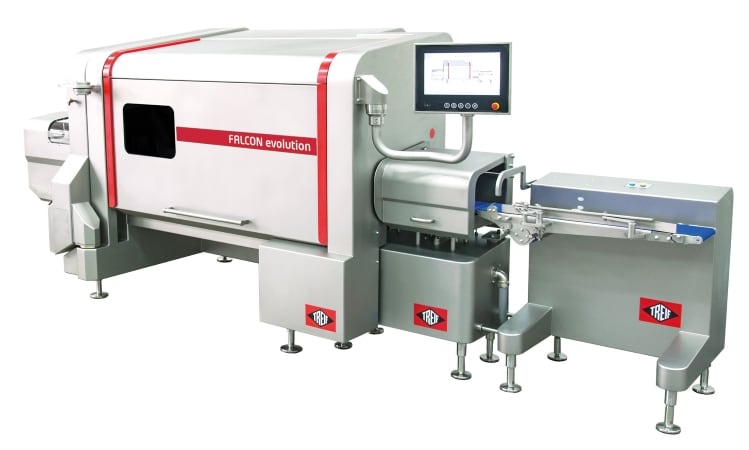
High yield continues to be a key trend, particularly in higher- value meat products where reducing the amount of waste is essential to maximise profit margins in very competitive markets. Similarly, reliability remains important and a growing consideration for manufacturers when specifying cutting, slicing and dicing equipment.
There is often the temptation to opt for lower-cost options when budgets are under pressure, but the immediate financial gain of doing so can be quickly lost through costly downtime.
The amount of available floor space is another consideration for some meat processors. Developing a smaller machine was the driver for the development of the S6 slicer from Weber, available from Interfood Technology.
The Weber S6 offers the performance normally associated with a much larger machine in a compact design, making it ideal for applications where space is limited, says Tom Foran of Interfood’s slicing division.
Measuring only 1,300mm wide, the S6 features an extra-wide slicing throat that can accommodate products up to 520mm wide. This capacity, plus many of the integrated features within the S6, had previously only been available in machines with a much larger footprint.
“Changing markets and emerging consumer trends mean that versatility is a prime focus in slicing technology,” says Foran. “This has been specifically addressed in the development of the S6 with its modular design to enable future-proofing. A slicing line is a substantial investment so it needs to be considered carefully.”
Meanwhile, an upgrade to the Astech SRA-1 And SRA-1F automatic bandsaws from Interfood means fresh meat can now be cut in the same way as frozen.
“As long as the fresh meat has a certain rigidity – for example, a central lateral bone will provide the necessary rigidity – then the bandsaw can accommodate it,” says Richard Nethercot, group divisional manager for Interfood’s butchery division.
“Previously, it had only been possible to cut chilled or crust-frozen products, so this further increases the flexibility of the bandsaw in terms of the applications for which it can be used.”
As part of the design upgrade, the new versions of the bandsaw also feature automatic sawdust extraction as standard. The output conveyor belt has been lowered to allow easier transportation of the cut product and a new approach to the lower bandsaw guide prevents the fresh meat from sticking to the guide.
Utilising safety in new ways
Safety is also being considered in machinery in ways it hasn’t been previously. “We are seeing an ever-increasing focus on safety in meat cutting applications and our bandsaws have been designed with this very much in mind,” says Nethercot.
“The Astech bandsaws are surrounded by a stainless steel barrier to prevent access to the machine’s interior, with additionally a safety light curtain that stops all movement if activated.”
An addition to the Astech range is the CC-2 continuous cutting machine, which applies a longitudinal cut along the product. A common use for the CC-2 is the splitting of boiled hams, though it is also suitable for cutting pigs’ trotters, beef legs, knuckles, blocks and whole poultry.
Safety is central to the machine’s design, with the CC-2’s bandsaw blade covered. “Optimum hygiene is ensured through ease of cleaning, with the whole machine, even the motors, designed to be washable,” says Nethercot. “The speed and width can be adjusted up to a maximum width of 200mm, with high production capacity and an excellent cut quality.”
Automation is another major trend that has the potential to shape the way cutting, slicing and dicing equipment evolves in the near future. By adopting automated processes – and removing or minimising the need for human intervention – a repeatable and consistent product can be achieved, driving increased efficiency and control of product quality.
“Reducing human handling of product – particularly in the case of meat – also significantly lessens the potential for contamination, which is a real benefit when there is such a focus on hygiene and safety,” says Edwards at Treif.
The automation trend is gaining pace, adds Tulip’s Wijnberg. “It’s a glimpse into the factory of the future, built on highly capable and flexible technologies,” he says. “We’re seeing a lot of equipment adding inline tempering and press processes for a more seamless production line.”
The ongoing conversation about automation in the food industry appears to have divided businesses into two distinct camps – the trailblazers and the conscientious. While some are racing to automate production lines and place themselves ahead of the curve, many UK processors remain uncertain, waiting to see how their competitors fare first.
Earlier this year, at the Foodex exhibition in Birmingham, experts warned that UK food businesses must reconsider their resistance to automation if they are to keep up with European competitors. During the seminar ‘Stealing our jobs: can robots survive the food crisis?’, there was a sense of frustration as specialists discussed the financially conservative across Britain’s food industry.
Bryan Clapham, marketing manager of Cutting Edge Services says flexibility is the key to tackling these concerns. “Where businesses assume they must opt for a single equipment provider, usually the manufacturer, we can offer a more adaptable and tailor-made service.”
Alongside the firm’s strategic partner ABB Robotics, Cutting Edge Services acts as a systems integrator for clients. “This means we objectively evaluate their businesses before adapting new technologies to fit their existing systems,” says Clapham.
“Rather than entirely transforming their production lines, we are keen to show our customers how state-of-the-art equipment can work alongside their trusted machinery. In doing so, we hope to eliminate the fear factor and highlight the remarkable potential of automation.”
Mobile abattoirs offer potential
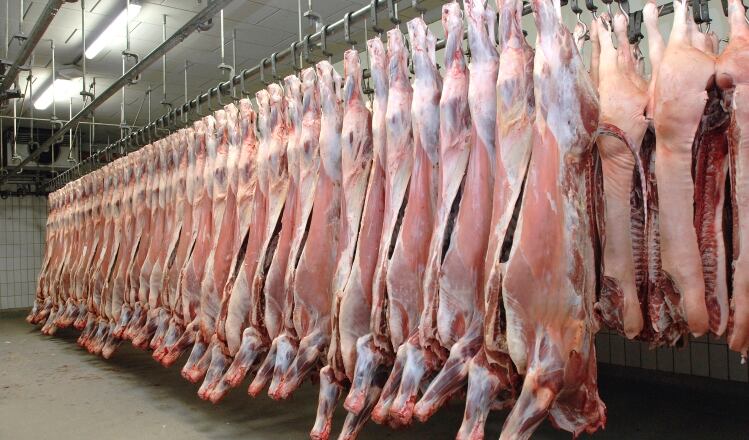
In the last decade, more than a third of the UK’s small-scale abattoirs have shut down, according to research by the Sustainable Food Trust, which describes the situation as “critical”.
If this is not quickly resolved, the UK risks compromising animal welfare standards as well as losing local and traceable meat supplies, the Trust adds.
For some in the meat industry, mobile abattoirs are being touted as a potential way of addressing the high closure rate. The compact systems allow livestock to be slaughtered on the farm, cutting transportation costs and saving animals from enduring a long and potentially stressful journey to an abattoir.
A small producer group, led by Fir Farm in Gloucestershire, is currently looking into the practicalities of establishing a mobile abattoir and, according to its own surveys, it has received an overwhelmingly positive response.
To accommodate the launch of these compact slaughtering systems, equipment manufacturer Cutting Edge Services is now distributing a range of table-top slicing and cutting systems. From small-scale strip cutting, slicing and dicing machines to compact tying machines, the range is designed to bring greater flexibility to the slaughtering process.
Many would claim it’s an ideal example of how machinery makers can work with processors to find ways to overcome the challenges facing the meat industry.

